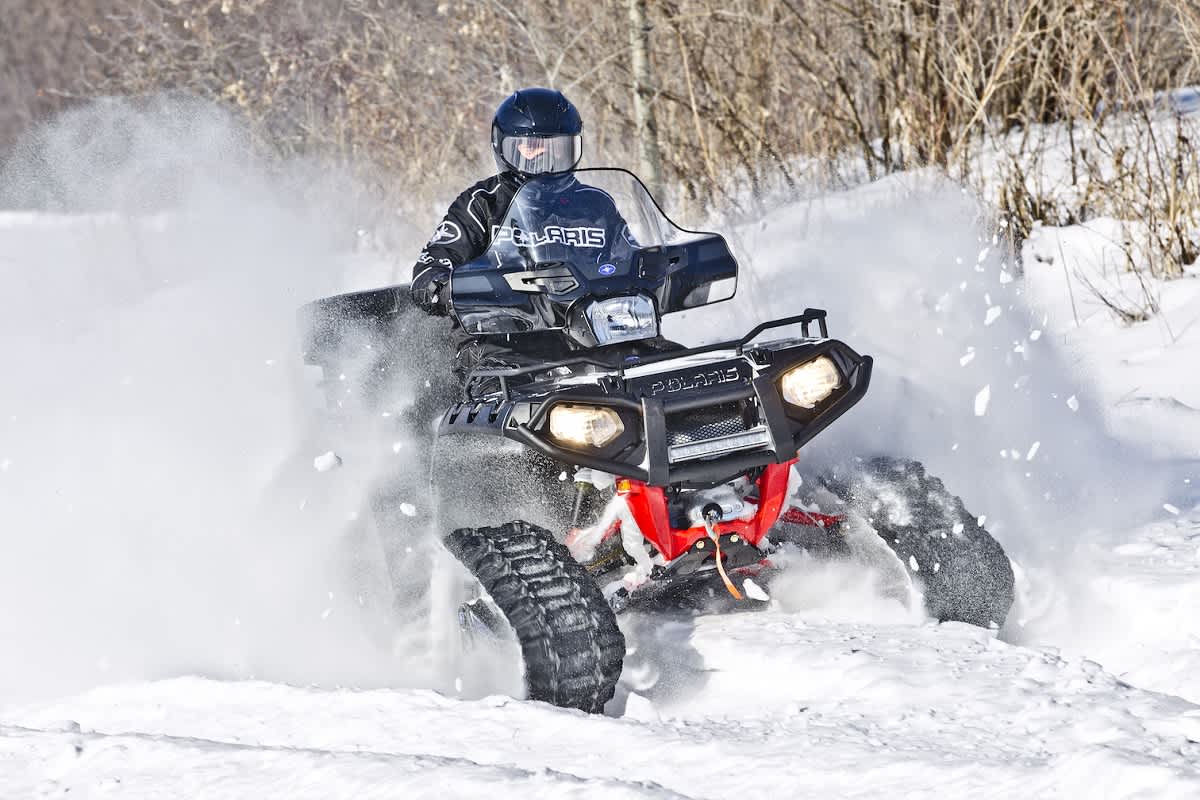Winterizing Your ATV
Derrek Sigler 12.03.13

It’s inevitable that winter is here. Not much we can do about it for those of us in the more Northern climates. As we all finish raking the leaves, tuning up the snow blower, and finding where we hid the shovels, we also need to take a look at our ATVs and make sure they’re ready for winter too.
Some just put the ATV or UTV away for the season, not wanting to deal with the snow and cold. That’s fine, but make sure you’re taking care of it and getting it ready for spring, otherwise you’re going to be looking at some repair bills. The rest of us will use our ATVs and UTVs all winter long. There are some steps to be taken for that, too.
A little now or a lot later
So you’re going to put your ATV away for the winter months. There are a few things you need to do so it starts up again in the spring—otherwise you can plan to spend a few bucks that could be better spent buying a new gun or some fishing gear.
The first thing you should do is clean your machine fully. I know it sounds kind of silly, but mud and gunk can turn into a bigger issue by the time the snow melts. Anything that holds moisture and sits against anything steel can lead to rust. Rust is the enemy of fun toys. Rust is bad!

One of the easiest things to do is to take care of your fuel system. We’ve all seen those Stabil commercials, but man they are so true. Gas breaks down and turns into all kinds of nasty sludge. This can clog a fuel line, the petcock of your gas tank, and the carburetor or fuel injection. Disrupt the fuel supply in any way and your machine ain’t going anywhere come springtime. Add a fuel stabilizer to your gas and then run the machine for a while to let it work its way through the entire system. If your machine has a carburetor, drain it. It just makes things easier.
Check your coolant levels, too, and make sure that your coolant is at least 50 percent antifreeze. Too much water can be very bad. Radiators are expensive and frozen coolant expands. I also like to do an oil change before putting the machine away for the winter months. Dirty oil has stuff in it that is bad and can lead to corrosion.
Batteries should be charged up and disconnected if being stored for several months. I like to take mine into the house and store it in the garage. The water in the cells of a battery can freeze and wreck a battery quickly.
Another thing that I learned the hard way involves tires. Make sure you deflate your tires a little bit at the very least. The cold will make the air in the tires expand and contract as the air warms and cools during the winter. I forgot to do this one year and ended up with tires that wouldn’t spin true the following year. The best thing to do is to jack up the machine and place blocks or jack stands under it so the tires aren’t touching the ground or floor.
Speaking of learning the hard way, make sure you block any opening to the machine’s internal parts. This means things like the airbox, exhaust, and storage areas need to be closed off. Little animals like squirrels, mice, and more will get in there and nest, leading to all kinds of bad things. I have a four-wheeler that had a whole family of squirrels nesting in the airbox one winter. The nasty little buggers even ripped apart the air filter for more bedding material. A lot of the filthy nastiness found its way into the carburetors and then into the engine. I got to rebuild it all in the spring to the tune of several hundred dollars. I would have rather bought a new shotgun for turkey hunting.
Once you have all of this stuff taken care of, cover the machine up with a good tarp or cover and relax, knowing that you will have just a little bit of work to get it rolling again the following spring.

Keep on trucking
If you’re going to keep your ATV or side-by-side going for the whole winter—and why wouldn’t you—there are a few steps to keeping it rolling along.
Change the oil before things get too cold, just to make sure things are good and lubed up. If you’re in a really cold climate, you might need to switch to a different weight of oil. Check your owner’s manual for sure.
You should also lower the air pressure in the tires. As I mentioned earlier, air changes pressure with the temperature, so you want to keep it lower to handle those fluctuations—not to mention that a tire with lower pressure will get better traction in the snow. Make sure you don’t go below the specifications on the tire for minimum pressure, though. A blowout in the cold would really stink.
Accessorize
There are all kinds of cool stuff you can get for your ATV and side-by-side that make life easier in the winter. You can get many different snowplow setups that make clearing the snow from your driveway a snap. Cab enclosures are a nice touch, too. There are so many different offerings that getting into all of them here would be crazy. But if you can imagine it, I’m betting someone out there makes it. Have at it.
Whether you’re putting the machine away for the winter months or keeping it out and using it, taking a few simple steps can make the difference between keeping your ATV or side-by-side running smooth all year long and shelling out hundreds of dollars in repairs. Trust me, it’s not worth it to let it slide.

